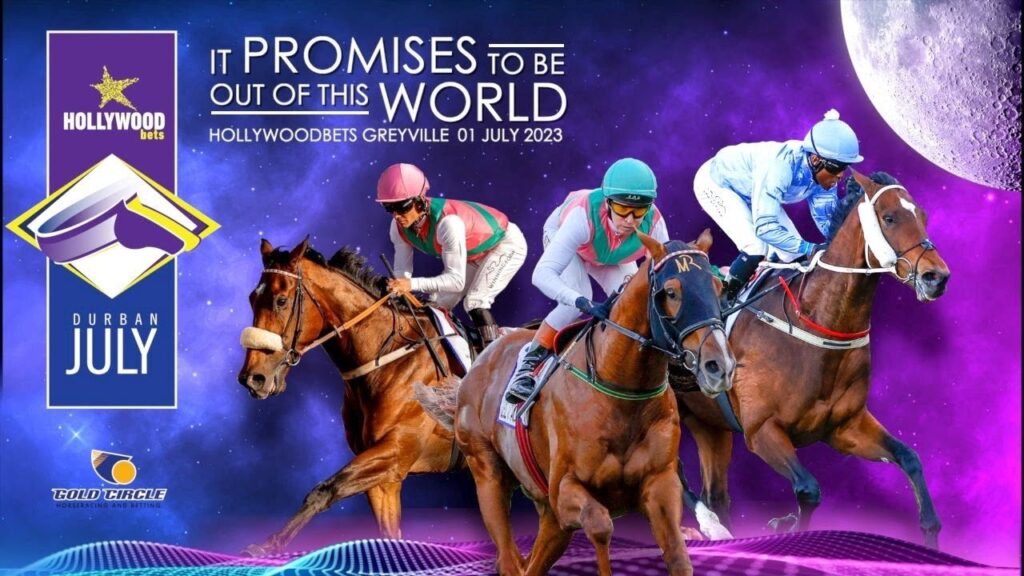Once a horse race, now a national spectacle — the Durban July galloped into Greyville once again, bringing with it not just horses and hats, but a full-blown showcase of South Africa’s socio-political contrasts. Held annually on the first Saturday of July, the event is now a cultural landmark, rich in symbolism, style, and stark inequality.
Beyond the parade ring lies a deeper reflection: the July mirrors the hopes, contradictions and divisions of a nation still finding its rhythm. With over R150 million pumped into Durban’s economy during race week, it’s an economic blessing — and a societal mirror.
Showbiz Meets Struggle on the July Stage
At the surface, it’s couture, champagne, and cameras — but a few metres away, working-class punters watch behind fences. Dubbed “The People’s Race,” the Durban July exposes both unity and disparity. While fashionistas sashay in luxury marquees, many Durban locals battle traffic jams, noise, and limited policing.
What once began under colonialism’s shadow has transformed into a battleground of culture and capitalism. The Greyville Racecourse, steeped in racial exclusion from its 1920s origins, now sees Indian, Black and White South Africans gather — though not on equal terms.
Political sparks have flown here too. The 2009 “Zuma Whisky Incident” saw defiance spill into elite spaces, showing how politics can crash even the most glamorized events. The pageantry hides a powder keg of past and present tensions.
Hollywoodbets and the Business of Brands
The title sponsor Hollywoodbets, now dominating the July with bold purple branding, has reshaped the race’s identity. Since taking over in 2020, they’ve added concerts, fashion and lifestyle showcases, transforming it from race day to lifestyle event.
From betting to glitz, the event’s heart now beats with commercial rhythm. Branded influencers compete for clicks while boardroom moguls network behind velvet ropes. What was once a horse race is now a stage for brand battles and social clout.
Still, the true stars — the racehorses — rise at dawn in Summerveld’s paddocks, prepped for their moment of glory. The main race, a 2,200m Grade 1 contest, featured 18 contenders this year. Eight On Eighteen, trained by Justin Snaith and ridden by Richard Fourie, emerged as the crowd’s favorite.
A Cultural Carnival, But For Whom?
Zulu regalia, Indian style, and township flair clash and collaborate on this unofficial runway of the rainbow nation. Yet, deep questions remain: Who owns the stage? Who profits from the parade? And who gets left behind?
While Sadha Naidoo steers the transformation agenda at Gold Circle, concerns about access and fairness continue. Locals are proud, but also fatigued. For them, the July is both economic driver and urban disturbance.
In its contradictions — from luxury to struggle, fashion to frustration — the Durban July is South Africa in miniature. What we choose to celebrate or criticize reflects not just the event, but ourselves.
As the horses rest and the glitter fades, one truth gallops ahead: behind every spectacle lies a story. In the case of the Durban July, it’s a story still being written.





